
FEAST OF OUR MOTHER OF PERPETUAL HELP IN THE ARCHANGELS PARISH SATELLITE TOWN LAGOS
It was an annual colorful celebration in the Archangels parish, as over five thousand parishioners of the Archangels Church Satellite town gathered together to celebrate the feast of Our Mother of Perpetual Help on Sunday 30th June 2019.
The pastor Fr. Gabriel Achu C.Ss.R with the Superior of the Satellite town community Fr. Vincent Oko C.Ss.R welcomed the Vice Provincial Superior Fr. Joterio Aghoja C.Ss.R, who was also the chief celebrant at the Mass, with other Redemptorist priests and religious present at the Mass. Highlights includes the ushering in of the Icon of Our Mother of Perpetual Help, Veneration of the Icon of Our Mother of Perpetual Help and celebration of the feast proper after Mass.












CELEBRATING THE FEAST OF OUR MOTHER OF PERPETUAL HELP, RENEWAL OF TEMPORARY VOWS AND INSTITUTION OF MINISTRIES
It was very unique and remarkable on the feast day of Our Mother of Perpetual Help (June 27, 2019) as the Holy Mass was offered to mark the feast our Patroness and our Help.
The Holy Mass was held at the Ligouri House Chapel in the Redemptorists Spirituality Centre Ibadan, Oyo State, the chief celebrant was the Vice Provincial Fr. Joterio Aghoja C.Ss.R, who during the Mass received the vows of 26 students who renewed their temporary vows. Six of the confreres received the minor Order of the ministry of Reader, while three of the confreres received the minor Order of the ministry of Acolyte. Three Pre-novices were also present to participate and witness the ceremonies of the day.
The celebration concluded on a joyful mood as confreres enjoyed themselves with good meals in celebration of the feast of Our Mother of Perpetual Help.













Alfonso Maria de 'Liguori was born near Naples in 1696. His parents were Joseph, captain of the royal galleys , and Anna Knights of Avenia.The father wanted his eldest son received a good education, so Alfonso as a child was educated by preceptors. At thirteen, he started his law studies and to sixteen, four years before the normal age, he obtained his doctorate in civil and canon law in Naples university .
It is said of him (with a little 'exaggeration) who has never lost a case in eight years of advocacy exercise. In 1717 Giuseppe tried to arrange a marriage for his son, but the thing did not succeed. The old screw say that for a year or two his religious enthusiasm waned somewhat and, although not a great sinner, loved the life of society, entertainment to fashion and music of the Neapolitan theater (almost certainly to an extent which today would be considered fully compatible with the sanctity). In lent of 1722 he made a retreat with the Vincentians. In lent of 1723 decided, in private, not to marry and to practice law only up to when I had shown her "inner guidance ", which he recognized as the voice of God
Alfonso few months lost an important cause and indignation of the father added an interior locution: while visiting the hospital sick of incurable heard twice the inner voice that said, " Leave the world and give yourself to me ." He went to the church Our Lady of Mercy , put down his sword on the altar and asked to become part of the Oratory priests. Joseph tried to dissuade his son, but eventually left him to become a priest, provided, however, that it remained in the house and would not enter into the congregation of the Oratory and Alfonso accepted, on the advice Oratorian Pagano, his spiritual director.
He began to study theology in the house and in 1726 was ordained a priest . For two years he devoted himself to apostolic activity in the kingdom of Naples and earned a reputation for outspoken and preacher of effective confessor , who avoided the refinements and Jansenist rigor. " It is a pleasure to listen to his sermons: she forgets himself and preaches Jesus Christ," he was told.
Was the penitents as souls to be saved and not as criminals to be punished or scare. It is said he never refused absolution to anyone. But some people found fault with his behavior. Heorganized the "slackers", ie the unemployed and idlers of Naples, in groups who gathered to receive religious instruction. Once scolded one of the members that showed excessive zeal for fasting and another priest added, " God willing that we eat to live; if you have received the cutlets, eat them and be thankful: you will do well . " The story began to circulate and turned to discredit Alfonso: You said that the groups were secret societies of Epicureans or quietist or even that they were part of a new sect called "cutlets". Some members were arrested and Alfonso had to explain what had happened.
The archbishop told him to be cautious and "schnitzel circles" continued undisturbed;It was later transformed in the ' Association of the Chapels , which in the early twentieth century there were thousands of workers, with daily meetings for prayer and religious instruction in the chapels of the brotherhood. In 1729, at the age of thirty-three years . Alfonso left home to become chaplain of a college where they were preparing missionaries for China.
Here he met Thomas Falcoia, a priest who was twice her age and who became his close friend. The Falcoia had tried for years to found a new religious institute following a vision that he claimed to have had in Rome, but was only able to found a convent of nuns in Scala near Amalfi.
In celebration of Transfigurationof 1731 the nuns dressed the new red and blue dress and began a life of strict enclosure and severe penance: it was the beginning of the Redemptorist nuns , still flourishing today in various countries. Alfonso himself extended the new rule and made it clearer. Bishop Thomas the then suggested to found a new congregation of missionaries who worked especially among farmers. In November 1732 he left Naples for Scala, where 9 of the same month it was founded the Congregation of SS. Redeemer. From 1726 to 1752 he preached everywhere in the kingdom of Naples, especially in villages, with great success.
His confessional was always crowded: many hardened sinners returning to the sacraments, enemies were reconciled and resolved family disputes. In a few years were erected several foundations new, despite the opposition of the anti-clerical faction at the local and state level.
With the experience of the former lawyer, strict and sensitive preacher, he became a prominent moral theologian After the death of Falcoia in 1743, the life of Alfonso was very intense . He led the congregation through difficult events, internal and external, working to have it recognized by the king, took care of a lot of people in his ministry, he led missions in Naples and Sicily, wrote hymns, composed melodies, he devoted himself to painting. After 1752 his health began to decline and therefore its missionary force was slowed down ; then he dedicated more time to write . A canon of Naples expressed a general feeling when he said: " If I were pope, the canonizzerei without trial ." Father Mazzini said, " He fulfilled perfectly the divine commandment to loveGod above all things, with all your heart and all your strength, as everyone could see, as I saw better than any other in the long years spent with him " .
Alfonso was stern, yet full of tenderness and mercy ; being himself plagued by frequent scruples, was especially kind to those who were prey. He sixty-six years when Pope Clement XIII appointed him bishop of St. Agatha of the Goths, between Benevento and Capua. He began to reform the seminar and also how to assign benefits. Then there were priests who said Mass in fifteen minutes or less : Alfonso suspended them until they had changed their way of celebrating. He also wrote an essay on the topic: " Truly seeing celebrate Mass in this way is enough to lose faith ."
It was in St. Agatha recently when plague and famine broke out . Alfonso had predicted several times in the previous two years, but she had done nothing to prevent them. Given that thousands of people were starving, he sold everything to buy food for the hungry , he too many debts to procure aid. At one point the people in turmoil wanted to kill the mayor of St. Agatha, wrongly accused of concealing food; then Alfonso, challenging their fury, offered his life in place of that of the mayor, then calmed them by distributing food rations for two days. Bishop Alfonso became very concerned of public morality . This earned him many enemies, so much so that his life was often threatened by high-ranking people or those against whom he had brought court proceedings.
" Everyone has to monitor his flock. When will these people hunted here and there, in disgrace, without food or accommodation, then put judgment and give up their lives as sinners . " The Alfonso attitude may sound harsh, if judged in the light of certain ideas of great tolerance of the late twentieth century, but considering the conditions of time and place in which he lived, his careful examination of applications and authentic purpose of the moral law , his relentless pursuit of the best for the people and for the religious community, make him a saint of all time.
In June of 1767 Alfonso was such a strong and persistent attack of rheumatic feverwhich is feared for him. He received the last sacraments and even began to plan a funeral. But after twelve months his life was out of danger . The neck, however, remained bent permanently and that it is found in the portraits. As long as the surgeons were unable to straighten a little, the pressure of the chin caused him a living wound in the chest so much that he could not celebrate Mass. In later he succeeded, using a chair at the time of communion. In 1784-85 through a terrible "dark night of faith " and is said to have suffered temptation on all matters of faith and all the virtues. He was assailed by scruples, by fears unjustified , by illusions then described as diabolical.
This lasted for eighteen months , with rare peace and lucid intervals. Then followed a period of frequent ecstasies . It is said that gifts of prophecy and even miracles have taken the place of the interior trials. Reports on the experiences of the time of Alfonso, then old and sick, presenting them as an exemplary case of the struggle between the good and bad inclinations; But today it is impossible to frame it within the terms of modern geriatric medicine, although the start of different diseases can sometimes appear as a struggle between light and darkness.
Alfonso died in the night between July 31 and August 1, 1787, two months after his ninety-first birthday. In 1796 Pius VI, the Pope who condemned him as a result of a misunderstanding, decreed the introduction of his cause. In 1816 he was beatified in 1839 and canonized in 1871, proclaimed a Doctor of the Church. In 1793 the government of Naples recognized the original rule and the Redemptorists were united again. Currently they are widespread throughout Europe, in America and in other parts of the world.
Source: St. Alphonsus Liguori Prospect Heights

St. Clement Hofbauer was born in Tasswitz, Moravia (now the Czech Republic) on December 26, 1751. In his early youth, after the death of his father, he worked as an apprentice baker. Having become a servant in the Norbertine Abbey at Klosterbruck, he was able to follow the call to the priesthood by completing first his secondary schooling and then his catechetical, philosophical, and theological studies in Vienna, Austria. During this time he made yearly pilgrimages to Rome, where he encountered the Redemptorists.
On October 24, 1784, with his friend Thaddeus Hübl, Clement entered the Redemptorist Congregation. Both professed religious vows on March 19, 1785, and were ordained priests on March 29. As vicar general of the Congregation north of the Alps, Clement founded the first house of the Redemptorists in Warsaw, Poland. Other houses were established in Poland, Prussia, Germany, Switzerland, and Romania. He lived in Warsaw from 1787 to 1808, and with the collaboration of lay people of various nationalities, he developed a very fruitful apostolate, promoting good works and strengthening the piety of the faithful.
With the takeover of Poland by Napolean, the Redemptorists were suppressed and Hofbauer — forced to leave Warsaw — made his way to Vienna. In 1813 he was appointed rector of the church of the Ursulines. Through the charisms of spiritual direction, preaching, confession, and works of charity, he converted and helped people of every social class. Hofbauer's activity influenced the Congress of Vienna and the culture of the time, especially the Romantic Movement.
• Clement died at Vienna on March 15, 1820.
• He was canonized by St. Pius X on May 20, 1909.
• He is co-patron of both Vienna and Warsaw.
The shrine of St. Clement Hofbauer is in the church Maria am Gestade in Vienna, Austria.
Source: Living Redemptorist Spirituality: Prayers, Devotions and Reflections (North American Commission for Partnership in Mission, 2009)

St. Gerard Majella was born in Muro Lucano, Italy, on April 6, 1726, into a family of humble circumstances. From his parents Gerard learned the love of prayer and sacrifice. When his father died, Gerard, being the only son, had to provide for his family by working as a tailor. At the age of 14 he sought to enter the Capuchin friary but was rejected because of his poor health. After a short time as the domestic servant of the bishop of Lacedonia, he returned to tailoring but earned a minimal income.
In April 1749 after attending a Redemptorist mission in Muro, Gerard succeeded in getting himself accepted by the congregation. Following a trial period and a year of novitiate in the house at Deliceto, he professed religious vows on July 16, 1752. Gerard was noted for his observance of the Redemptorist rule, and collecting money for the material needs of the community. His presence to people who were weighed down by poverty and illiteracy was a sign of hope to them. Gerard had great empathy and testified to trust in the love and the compassion of God.
During his five years as a lay brother in the congregation, Gerard was remarkable for his apostolic zeal, patience in sickness, love for the poor, deep humility in the face of false accusation, heroic obedience, spirit of penance and constancy in prayer. He wrote numerous letters of spiritual direction. The Lord favored him with many spiritual gifts, including prophecy, the reading of people's hearts, and the gifts of miracles. He died at Materdomini on October 16, 1755.
Gerard was beatified by Leo XII on January 29, 1893, and canonized by St. Pius X on December 11, 1904. He is invoked as patron of mothers, especially in time of pregnancy. Couples hoping to conceive a child also seek St. Gerard's intercession.
The shrine of St. Gerard Majella is at the basilica in Materdomini, Italy.
Source: Living Redemptorist Spirituality: Prayers, Devotions and Reflections (North American Commission for Partnership in Mission, 2009)
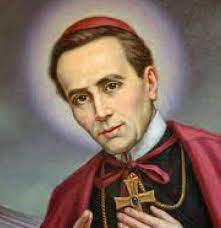
John Neumann was born in Prachatitz in Bohemia (now the Czech Republic) on March 28, 1811. He studied theology in the seminary of Budweis. Zealous for the missionary life and to lead souls to Christ, he decided to leave his homeland to dedicate himself to the European immigrants in America, who were deprived of spiritual support.
Neumann was ordained a priest by the bishop of New York in June 1836, and gave himself to the pastoral care of people in the vast area around Niagara Falls. Wanting to live in a religious community that corresponded more to his missionary vocation, in January 1842 he entered the Redemptorists. A tireless missionary, Neumann busied himself in particular with the German immigrants, first in Baltimore, then in Pittsburgh.
Having filled the role of vice-provincial superior of the Redemptorists from 1846-49, he became the parish priest of St. Alphonsus Church in Baltimore. In 1852, at the age of 41, he was named bishop of Philadelphia. Neumann had a strong effect on the religious life of the United States by founding Catholic schools and promoting devotion to the Eucharist. He founded a new religious institute — the Third Order of Saint Francis of Glen Riddle. The School Sisters of Notre Dame likewise regard Neumann as their secondary founder, their "Father in America." In just seven years, he built 89 churches, as well as several hospitals and orphanages. As a bishop, Neumann was untiring in visiting his vast diocese.
On January 5, 1860, at the age of 49, he died suddenly of a heart attack on a Philadelphia street. Neumann was beatified during the Second Vatican Council on October 13, 1963, and was canonized on June 19, 1977. In the homily on the occasion of Neumann's canonization, Pope Paul VI summarized the activity of the new saint: "He was close to the sick, he loved to be with the poor, he was a friend of sinners, and now he is the glory of all emigrants." St. John Neumann is invoked as a patron of sick children and of immigrants. Source: Sacramentary and Lectionary Supplement, The Congregation of the Most Holy Redeemer. (North American Redemptorist Spirituality Commission, 2007)
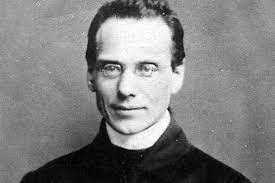
Francis Xavier Seelos was born in Fussen, Bavaria, on January 11, 1819. He studied philosophy at the University of Munich and began theology as a diocesan seminarian. After visiting the Redemptorists in Allotting, where he heard of their missionary work in North America, he decided to join them.
With their approval, he set off for the United States in 1843 where he made his novitiate. He made his profession in Baltimore in May 1844 and was ordained a priest there in December.
His first assignment was to St. Philomena's in Pittsburgh where he served for six years as assistant under the leadership of John Neumann, who was pastor and superior of the community. Father Seelos went on to serve as superior of the community and novice master for three more years.
He was appointed pastor of St. Alphonsus in Baltimore, 1854; pastor and prefect of students at Sts. Peter and Paul in Cumberland, MD, 1857; and pastor and prefect of students at St. Mary's in Annapolis, MD, 1862.
Replaced as prefect of students, he preached missions in German and English throughout the Northeast and Midwest. Father Seelos was always an active and highly successful missioner. He was particularly devoted to the confessional, and was revered as an exceptional confessor and spiritual director. After a year as assistant pastor of St. Mary's in Detroit, MI, in 1866, he was assigned as pastor of Assumption Parish in New Orleans, LA. There he made a great effort to care for the poor, sick, and neglected. While caring for victims of yellow fever, he contracted the disease himself. Only a year after being assigned, he died in New Orleans on October 4, 1867.
He was beatified in 2000.
Source: Sacramentary and Lectionary Supplement, The Congregation of the Most Holy Redeemer. (North American Redemptorist Spirituality Commission, 2007)

Peter Donders was born in Tilburg, Holland, on October 27, 1809, and as a boy he felt called to the priesthood. His family was poor, and his schooling was cut short so that he could learn weaving, which was his father's trade. At the age of 22, he entered St. Michael-Gestel Seminary. Ordained a priest on June 5, 1841, Donders set out for Paramaribo, Surinam, a Dutch colony.
For 14 years he ministered to the city's 2,000 Catholics, and regularly visited the plantation slaves, the military garrisons, and the indigenous people who lived along the rivers. In 1856, he volunteered to minister to people with leprosy at Batavia, where he remained for the next 28 years. In 1866, he joined the Redemptorists, professing his vows on June 24, 1867. These vows gave him a more vivid sense of the apostolic missionary community, and he left Batavia more often to minister to other pastoral needs.
Donders died among his lepers on January 14, 1887. He was mourned as their benefactor and invoked as a saint. Pope John Paul II beatified Donders on May 23, 1982. Blessed Peter Donders is buried in Paramaribo, Surinam. Source: Sacramentary and Lectionary Supplement, The Congregation of the Most Holy Redeemer. (North American Redemptorist Spirituality Commission, 2007)

Dominic Methodius was born July 6th 1886 in Frydlant, Moravia (now the Czech Republic). He joined the Redemptorists in 1902, professed his vows on August 25th 1904 and was ordained to the priesthood on July 17th 1910. He was committed to his assignment of preaching missions.
As a Redemptorist missionary, he was sent in 1919 to work among the Greek Catholics of Galicia (Ukraine) and Slovakia. In 1946, he established the Redemptorist Vice Province of Michalovce of the Ukrainian Rite. Between 13th and 14th April, 1950, the Czech government suppressed all religious orders.
Consequently, several Redemptorists alongside other people spent 40 days walking barefoot under spotlight day and night, dressed only in the clothes on their backs.
Dominic Methodius was tried and sentenced to twelve years imprisonment, enduring terrible interrogations and tortures. He was kept in the tough prison of Leopaldor. During the Christmas season of 1958, he was caught singing a hymn, and was put into solitary detention. This made him suffer severe privation, cold and restricted condition. He died of pneumonia 23rd March, 1959.
He was beatified on 4th November, 2001 by Pope John Paul II.


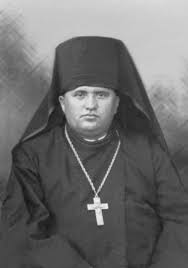
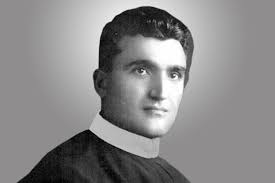
a). Bishop Nicholas Charnetsky (1884-1959) b). Bishop Vasyl Velychkovsky (1903-73) c). Father Zenon Kovalyk (1903-41) d). Father Ivan Ziatyk (1899-1952)
Nicholas Charnetsky was born in Semakivci in Halychyna, Western Ukraine, in 1884. He completed his theological studies in Rome and was ordained a diocesan priest in 1909. After obtaining his doctorate in theology, he was spiritual director and professor of theology at the major seminary in Stanislaviv. He entered the Redemptorist novitiate in Zboisk in 1919 and was professed in 1920. During his early years he was assigned to teach in the minor seminary and subsequently to the giving of popular missions. He was ordained bishop in 1931 and appointed the Apostolic Visitor to the Ukrainian Catholics of Volyn. From 1931-39, he ministered to the people of Volyn, Polisia, Pidliasia, and Belorussia. During World War II he was in Lviv, ministering pastorally and teaching at the theological academy. From 1945-56, he was imprisoned in about 30 Soviet labour camps and prisons. Following his release in 1956, he returned to Lviv and acted as bishop of the suppressed Ukrainian Greek Catholic Church in Ukraine. He died in 1959.
Vasyl (Basil) Velychkovsky was born in Stanislaviv, Western Ukraine, in 1903. He studied at the Major Seminary in Lviv and was ordained a deacon in 1923. He entered the Redemptorists as a deacon, professed vows in 1925, and was ordained a priest shortly after. After teaching at the minor seminary in Zboisk, Vasyl worked as a missionary for the next 20 years in rural Ukraine. He was arrested in 1945 and was condemned to death, but the death sentence was commuted to 10 years imprisonment. He was released in 1955. He was consecrated bishop by Metropolitan Slipyj in a hotel room in Moscow in 1963. He became the head of the Ukrainian Catholic Church in Ukraine. Arrested once more in 1969, he spent three years in prison. In the spring of 1972, near death, he was exiled from Ukraine. He died in Winnipeg, Canada, in 1973. It is believed that his death was caused by a slow-acting poison administered prior to his release from prison.
Zenon Kovalyk was born in 1903 in Ivachiv Horishniy near Ternopil in 1903. He joined the Redemptoristsand professed vows in 1926. He studied philosophy and theology in Belgium and was ordained in 1932. He went with Bishop Charnetsky to Volyn as a parish missionary and subsequently to Stanislaviv where he also conducted missions. Zenon was a fearless preacher of God's Word and love of the Mother of God. He was arrested by the Soviets in 1940. While in prison he continued his pastoral ministry among the prisoners. When the Soviet prisons were opened on the arrival of the invading German army, Father Zenon's body was found crucified to a wall of the prison of Zamartynivska in 1941.
Ivan Ziatyk was born in 1899 in Odrekhova, southwest of Sanok (now part of Poland). He entered the Ukrai¬nian Catholic Seminary in Peremyshl in 1919 and was ordained in 1923. He became prefect of the seminarians and taught theology and catechetics. He joined the Redemptorists in 1935, professing vows in 1936. He taught Scripture and dogmatic theology at the Redemptorist seminary in Holosko (near Lviv). Subsequent assignments were to the monastery in Ternopil as well as to the minor seminary in Zboisk (near Lviv) where he was superior of the community. The difficult situation in which the Ukrainian Catholic Church found itself (with all its bishops arrested and with the Belgian Provincial expelled), resulted in Father Ivan holding the posts of the Provincial of the Redemptorists and the Vicar General of the Ukrainian Catholic Church. He was arrested in 1950 and condemned to 10 years imprisonment, but died of a savage beating in 1952. The four Redemptorists were among 25 Ukrainian martyrs beatified during the papal visit to Lviv in 2001. Source: Sacramentary and Lectionary Supplement, The Congregation of the Most Holy Redeemer, Raymond Corriveau, C.Ss.R., editor. (Liguori, Missouri: North American Redemptorist Spirituality Commission, 2007.) a).
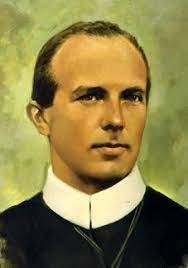
Kaspar Stanggassinger entered the Congregation with the intention of preaching the Gospel to the most abandoned. Instead, his superiors appointed him to form future missionaries. In addition to teaching, he gave pastoral assistance at churches in neighboring villages, especially by preaching. He was deeply devoted to the Eucharist, and in his preaching he invited all to have recourse to the Blessed Sacrament in times of need and anxiety.
He was 28 when he arrived at the seminary in Gars, Bavaria, in 1899. He preached the opening retreat of the year to the students, but he soon fell victim to a fatal case of peritonitis.
Kaspar used to say, "The saints have a special intuition. For me, who am not a saint, what is important are the simple eternal truths: the Incarnation, the Redemption and the Holy Eucharist."
He was declared blessed by John Paul II on April 24, 1988.
Source: Sacramentary and Lectionary Supplement, The Congregation of the Most Holy Redeemer. (North American
Redemptorist Spirituality Commission, 2007)

Gennaro Sarnelli was born in Naples, Italy, on September 12, 1702. Son of the Baron of Ciorani, he had a solid cultural and spiritual formation. Dedicating himself to the study of jurisprudence, he gained a doctorate in civil and canon law at age 20. Caring for the sick in the Hospital for the Incurables, he felt the call to the priesthood. During this time he also came to know Alphonsus Maria de Liguori, who was his first biographer.
Ordained a priest in 1732, he dedicated himself especially to the catechesis of young boys and to the rehabilitation of girls at risk of becoming prostitutes. In June of the following year, he entered the Redemptorists. He dedicated himself to the preaching of the Word of God to those who were most destitute of spiritual help. For reasons of health, in 1736, he returned to Naples, where, while continuing the missionary activity of the Redemptorists Congregation, he resumed his previous pastoral and charitable activities, especially among the sick, the old, those in prison and the young boys forced to work as dock-laborers. He also initiated a fervent movement against the spread of prostitution.
A prodigious writer, he published more than 30 books on a wide range of subjects, including socio-juridical studies, moral issues, mysticism, pedagogy, pastoral practice, Mariology, and ascetical theology. In 1741, he organized and took part in the great mission among the spiritually abandoned areas in the outskirts of Naples. Spent by his burning zeal, he died in Naples June 30, 1744, at the age of 42. John Paul II beatified him on May 12, 1996. Source: Sacramentary and Lectionary Supplement, The Congregation of the Most Holy Redeemer, Raymond Corriveau, C.Ss.R., editor. (Liguori, Missouri: North American Redemptorist Spirituality Commission, 2007.)
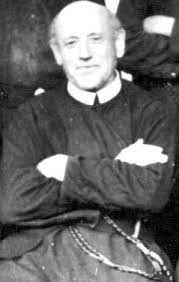
A short biographical profile of the Venerable Fr. Pelágio Sauter, CSsR
Fr. Pelágio Sauter was born on September 9, 1878, in Hausen am Thann (Württemberg, Germany), to Matthias and Martha who had 14 other children. At sixteen he entered the Redemptorist seminary in Bachham. In 1902 he made his religious profession in Gars am Inn and was ordained a priest in Deggendorf on June 16, 1907.
Having accepted the invitation to be sent as a missionary to Brazil, he set out, arriving in Rio de Janeiro with four other confreres on August 4, 1907, never to return to his homeland.
In his 52 years of living in Brazil, he spent the first 10 in São Paulo, working in various parishes, and the other 42 in Goiás. His favorite apostolate was the itinerant mission in the most abandoned areas of the region. Evangelizing in hundreds of small towns, arriving nearly always on horseback, the simple people learned to know and esteem him as a man of God.
The place that most benefited from his apostolic presence was Trindade (GO), where the faithful, on pilgrimage to the famous shrine dedicated to the Most Holy Trinity (Divine Eternal Father), had the opportunity to listen to him and receive his blessing.
Fr. Pelágio is considered, above all else, the priest of the poor and the comfort of the sick. In the last five years of his life, in fact, he devoted himself almost exclusively to the pastoral care of the sick. His last illness, which led to his death, is itself linked to a visit to a sick person. In fact, surprised by rain during his return to the community, he was first forced to go to bed for a bad cold and then to be admitted to the Santa Casa de Misericordia [hospital] in Goiás. Overcome by pulmonary emphysema, he died at 1:00 p.m. on November 23, 1961 at the age of 82.
The whole city of Goiânia attended the funeral and the Regional Government decreed three days of mourning. A crowd of about 30 thousand people attended his funeral.
Considered a national hero, several monuments were erected, streets and city squares were dedicated to him, and organizations were established in his name.
As a result of the many extraordinary graces attributed to his intercession, Fr. Pelágio is still remembered today as “the apostle of Goiás and the missionary of the people.”
The Diocesan Process about his life, virtues and reputation for holiness, begun on November 23, 1997, in the Mother Church of Campinas, was closed in the presence of a multitude of the faithful, in the Sanctuary of the Divine Eternal Father in Trindade (GO) on March 21 1999.
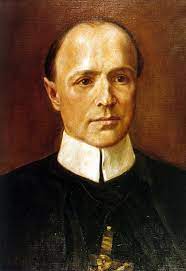
On April 15th, Pope Francis authorized the promulgation of the Decree on the heroic character of the virtues of the Redemptorist, Fr. Wilhelm Janauschek, a professed priest of the Congregation of the Most Holy Redeemer. By virtue of this Decree Fr. Wilhelm Janauschek has been declared venerable. He was one of sixteen children in a Viennese family that had come from Moravia, which gave to the church three religious priests and two nuns. So when Wilhelm was born on October 18, 1859, he found himself immediately immersed in that climate of true piety that favors the flowering of a religious vocation.
His spiritual director, a Redemptorist, took care to direct him toward the same Institute. Therefore it was natural that at age 17, having completed his elementary studies and the humanities, the Venerable should enter the novitiate at Eggensburg where he then passed to the student residence at Mautern, where he professed his religious vows on April 28, 1878. He was ordained a priest there on August 28, 1882. Since that time, over the next 44 years, in positions of ever increasing responsibility, he knew how to unite perfect regular observance and interior piety with multifaceted and fruitful apostolic activity. From 1882 to 1890, he was the socius of the prefect of students. From 1890 to 1901, he was the novice master. From 1901 to 1907, he was the provincial superior. From 1907 to 1924 he was the superior of various communities of his province.
To these official duties were added other very prestigious duties, such as extraordinary visitor to the provinces of Czechoslovakia and Poland (1911); and extraordinary visitor to the houses of Upper Germany (1917). And he did all this, without ever giving up the popular missions, even preached beyond the borders of his country, to the German settlers in Ukraine and on the shores of the Black Sea, and without ever omitting the spiritual exercises for consecrated persons and confessions and spiritual direction. In all these many activities he knew how to be elegant and balanced. He knew how to generate a vision of things based on faith and the most profound humility. He knew how to be both demanding and understanding, always solicitous of the good of others. On April 8, 1925 he was hospitalized, but since the doctors did not understand his illness, he continued to preach seven retreats with spiritual exercises, each one eight days long, until he fell seriously ill, the victim of his zeal.
Admitted to the hospital again, on October 8th, he spent nine months in a slow, excruciating agony, endured with much patience and abandonment to the will of God, which astonished those who saw it. He died on June 30, 1926 and was buried in the central cemetery of Vienna. But, on April 15, 1934, his remains were transferred to the church of St. Maria Am Gestade (where the body of St. Clement M. Hofbauer is also venerated). It immediately became the destination of continuous pilgrimages. Many graces are attributed to his powerful intercession with God.

On September 30th 2015 , Pope Francis, authorized the promulgation of the Decree on the heroic virtue of Redemptorist Fr. Antonio Maria Losito, a professed priest of the Congregation of the Most Holy Redeemer.
By virtue of this Decree Fr. Antonio Maria Losito is declared VENERABLE
BIOGRAPHY
Antonio Maria Losito was born in Canosa (BA) on December 16, 1838. He was the youngest of the five children of Antonio and Maria Celeste Ricco. When he came to see the light of day he was already orphaned by his father, who had died a few months earlier in an accident at work.
He was baptized on the same day he was born. One year later, on October 18th, he received the Sacrament of Confirmation.
After the death of his mother, at the age of ten, he and his siblings were entrusted to the care of his maternal grandmother, going to live in Margherita di Savoia (BT). After her death he returned to Canosa, living at the house of his sister Angela, where he continued his studies at the Franciscan monastery.
When he was 17 years old, having been influenced by the Redemptorists Vittorio and Nunzio Loiodice, Antonio Maria entered the Redemptorist novitiate at Ciorani (SA), on November 24, 1855.
After his profession of religious vows on October 24, 1856, he began studying theology at Materdomini (AV). He received minor orders on May 15, 1859, and the subdiaconate in Nusco (AV) on March 19, 1861.
Because of poor health, his superiors decided to allow him to recuperate in his family’s care. After ten months, fully recovered, he returned to Materdomini where, on March 15, 1862 he was ordained a deacon and, with a papal dispensation of 8 months and 20 days, he was ordained a priest on April 5 of that same year.
He remained in the Materdomini community, preparing for missionary activity until 1867. After the application of the repressive laws of July 7, 1866, which suppressed religious institutes in southern Italy, he was forced, like all the other Redemptorists in the Neapolitan Province, to return to his family.
He lived at Canosa for 20 years during which, in addition to staying in constant contact with the superior general and the other members of the Congregation, with whom he shared many apostolic activities, he worked especially for his fellow citizens, participating with keen missionary sensitivity in their human vicissitudes, both spiritual and social.
During the two decades in Canosa, he poured his strength and his willingness to bear witness to the Gospel of mercy into preaching, the formation of conscience, spiritual direction, the reconciliation of conflicts, the comfort of prayer in difficulties and a practical concern to the poor and the sick.
He twice tried, unsuccessfully, to reestablish a Redemptorist community, at Materdomini in 1869 and at Francavilla Fontana in 1886. With the calming of the anticlerical wave, on the morning of January 3, 1887, without notifying anyone of his departure, he was finally able to return to the Redemptorist community at Pagani (SA) where he contributed actively to the recovery of the Redemptorist province.
After five years in the community at Angri (SA), together with the Servant of God, Fr. Giuseppe Leone, Antonio Maria was transferred to Pagani where, for the next 20 years, he was responsible for the training of the theology students. In 1907, despite having already suffered a progressive paralysis for 17 years, he was appointed superior of the Pagani community and provincial superior in 1909.
Profoundly passionate about the Redemptorist charism, in proclaiming the Gospel to the most abandoned, Antonio Maria, with sacrifice and a great sense of responsibility, spared no effort and used his God-given talents in the ministry of preaching, in the wisdom of government, in the witness of charity to the confreres, in steadfastness amidst adversity and in total confidence in God’s help. Considered an expert and merciful spiritual guide, people from all walks of life benefited from his advice: priests, bishops, cardinals and popes, St. Pius X and Benedict XV. Both Blessed Bartolo Longo and his wife, the Countess De Fusco, had him as a confessor and spiritual director. Fr. Losito’s support of Bartolo Longo was instrumental in the more difficult moments during the construction of the social works connected to the Shrine of Pompei (NA), especially for the foundation of the Institute for the education and salvation of the children of prisoners.
Due to a kidney stone, he died at Pagani on July 18, 1917.
On April 9, 1983, following the insistent demands of some bishops of Puglia, with the approval of his Redemptorist superiors, the remains were transferred to the cathedral of Canosa and buried in the chapel of St. Alphonsus.
VENERABLE ANTONIO LOSITO - PRAY FOR US!
(Translation: Fr. Joseph P. Dorcey, CSsR)

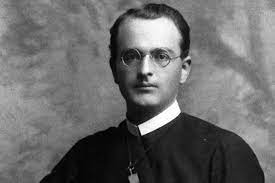




BLESSED (FR) JOSÉ JAVIER GOROSTERRAZU JAUNARENA CSsR
Fr. José Javier Gorosterrazu Jaunarena was born in Urroz (Navarra) August 7, 1877. At age 14, against the wishes of his father, he entered the Capuchin College at Lecároz. At age 16 he entered the Redemptorists, made his profession on September 8, 1896 and was ordained a priest on September 28, 1903. After a few years of teaching at El Espino (Burgos) and Astorga (León), he lived in the communities of Pamplona (Navarra), Madrid and Cuenca. He was a man of considerable culture as well as being a popular missionary, an expert confessor and a sought after spiritual director. He published two historical works and wrote a manual of philosophy. On August 10, 1936, he was arrested by the militia of the Popular Front, which took him to the cemetery of Cuenca and shot him during which he forgave his executioners.
BLESSED (FR) CIRIACO OLARTE Y PÉREZ MENDIGUREN CSsR
Fr. Ciriaco Olarte Y Pérez Mendiguren was born in Gomecha (Álava) on February 8, 1893 into a very religious family. Encouraged from childhood towards a priestly vocation. Oriented since childhood to priestly vocation September 21, 1904, he entered Redemptorist formation on September 21, 1904 at El Espino (Burgos) and professed his religious vows on September 8, 1911. After being ordained a priest on July 29, 1917, he went to Mexico as a missionary from 1920 to 1926. He returned to Spain and the growing anti-clerical spirit in the Mexico of that time. From 1926 to 1935, he exercised his apostolic ministry in Madrid, at the community of Perpetual Help. In May 1935 he settled in Cuenca. In the evening of July 31, 1936, he was arrested and taken to the place called "Las Angustias" where, severely wounded, was left to die after long hours of agony.
BLESSED (FR) MIGUEL GOÑI ARIZ CSsR
Fr Miguel Goñi Ariz was born in Imarcoain (Navarra) April 27, 1902. Manifesting the desire to become a priest even as a child, he would enter the Redemptorists on September 8, 1918 and professed his vows on August 26, 1920. Despite poor health and a shy nature, he was ordained a priest on September 27, 1925 and proved to be a strong and tireless preacher of popular missions. After serving in the communities of Nava del Rey (Valladolid), Granada, Santander and Vigo, he was transferred in 1932 to Cuenca, where he ministered especially in the Redemptorist Church of St. Phillip Neri. On August 31, 1936 he was arrested by the militia, shot and left to bleed to death.
BLESSED (FR) JULIÁN POZO Y RUIZ DE SAMANIEGO CSsR
Fr. Julián Pozo Y Ruiz de Samaniego was born in Payueta (Álava) January 7, 1903. He entered the Redemptorist seminary of El Espino in 1913, where he was much appreciated for the seriousness of his spiritual journey. He professed vows in 1920 and was ordained a priest on September 27,1925. Suffering from tuberculosis since 1921, he was able to accept the disease with resignation, devoting himself to prayer, hearing confessions and caring for the sick. Of a serene disposition, he was much sought after for his gifts as a confessor and spiritual director. In 1928 he was transferred to the apostolic community of Cuenca. He then moved to the seminary because of the outbreak of persecution. There, on August 9, 1936. he was arresed while praying the rosary, and was shot along the road that leads from Cuenca to Tragacete.
BLESSED (FR) PEDRO ROMERO ESPEJO CSSR
Fr Pedro Romero Espejo was born in Pancorbo (Burgos) April 28, 1871.He entered the Redemptorist school at El Espino and was eventually professed on September 24, 1889. He was ordaned on February 29, 1896. He was an extremely shy person and not given to outgoing missionary activity. So he devoted his life to the ministry of reconciliation, and to a religious life of meditation, prayer and mortification, witnessing a great spirit of poverty to others. After being in the communities of Astorga (León) and Madrid, he was transferred Cuenca. With the outbreak of the civil war, he was forced to leave the community and to live, as was the case for the other colleagues, with a local family in their private home. To escape the attention of the persecutors and continue to engage in the apostolate, he chose to go begging in the streets of the city. Detained several times by the militia, ultimately, in May 1938 he was arrested and taken to prison, where, physically and spiritually ministered to by other priests being held prisoner, he died of dysentery on May 29th.
BLESSED (BRO) VICTOR (VICTORIANO) CALVO LOZANO CSsR
Bro. Victor (Victoriano) Calvo Lozano was born in Horche (Guadalajara) December 23, 1896. Distinctly inclined to the spiritual life, he wanted to become a priest. Unfortunately, the times, the reluctance of his family to allow him and financial constraints all mitigated against starting his studies. On March 31, 1919, in a letter he left with his family explaining his reasons, he left them to become a Redemptorist. On November 13, 1920 he made his religious profession, taking the name Victoriano. In 1921 he was assigned to the Redemptorist community in Cuenca, where he worked as a clerk and porter. Although he had not attended school, he had an innate sense of culture, excelling particularly in a deep knowledge of asceticism. His superiors permitted him to be a spiritual director for young women, for whom he wrote a series of retreats and other works. On August 10, he was arrested by the militia, taken to the cemetery of Cuenca, and brutally murdered.

Blessed Maria Celeste Crostarosa (born as Giulia Crostarosa) was born in Naples, Italy on the 31st October 1696. At the age of twenty she entered a Carmelite monastery. When this monastery was suppressed, she went to Scala in the hills above Naples, where she entered a monastery living the Visitation Rule.
Under the direction of Bishop Thomas Falcoia, and with the cooperation of St Alphonsus, Maria Celeste reformed the monastery according to a revelation she had received from the Lord. She founded the Order of the Most Holy Redeemer (Redemptoristines) on the 13th May 1731. Their vocation is to be a "living memory" of Jesus Christ, witnessing to the paschal mystery.
In 1773 Maria Celeste was forced to leave Scala, and eventually she was called to Foggia, where she founded the Monastery of the Most Holy Saviour.
The spiritual journey of Maria Celeste, favoured by many mystical experiences, was characterised by obedience to conscience, by constant searching for the meaning of the gospel, and by living simply.
Maria Celeste died at Foggia on the 14th September 1755. At the moment of her death, Saint Gerard Majella, her spiritual friend, saw her soul flying to heaven as a white dove.
On 3 June 2013 Pope Francis declared her to be Venerable due to her life of heroic virtue. In 2015 a miracle attributed to her intercession was approved. In Foggia on 18th June 2016 Sr. Maria Celeste Crostorosa was beatified.
Thank you to the Redemptorist North American Commission for Partnership in Missions for this article.

Venerable Alfred Pampalon is the Patron of Alcoholics and Drug Addicts. Venerable Alfred is a link in the chain of New World Redemptorist holiness; he was born near Quebec, Canada, one month after the death of Blessed Francis Seelos. Accepted by the Redemptorists, he made his novitiate and priestly studies in Belgium and was ordained in 1892. He contracted tuberculosis and returned to Canada in 1895. Declining rapidly, he died in 1896 at age 29, at St Anne de Beaupre.
His priestly life was short, but he prayed much, suffered patiently and trusted in God's love. Dying, he suddenly sang Mary's Magnificat. His cause for canonization is progressing in Rome; he is a model for all those who take God seriously wherever they find themselves in life. Thanks to the Redemptorists of North America
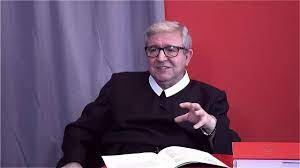
(Translation: Fr. Joseph P. Dorcey, CSsR)
On November 7 2014, Pope Francis declared the Servant of God, FR. PELÁGIO SAUTER, CSsR (1878-1961), to be VENERABLE, authorizing the Cardinal Prefect of the Congregation for the Causes of Saints to promulgate the Decree on his heroic virtues.
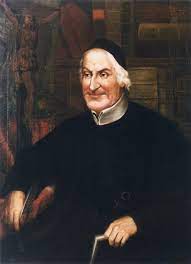
Joseph Passerat was born in Joinville, France, in 1772. He served as a drum major and Quartermaster in Napoleon's army until one day he skipped into Germany. His quest for the priesthood led him to Warsaw, where under the direction of Saint Clement, he entered the Redemptorists. For 20 years, Clement used Passerat in his plans for expansion and chose him to succeed him as vicar general of all the Redemptorists in northern Europe. Passerat sent the first six Redemptorists to the U.S. in 1832, and for 28 years, fostered the American Mission. Saint Clement called him the Great Pray-er, a legacy that he has stamped upon the New World Redemptorists. His cause for Canonization is progressing in Rome.
Thanks to the Redemptorists of North America